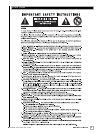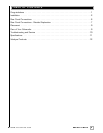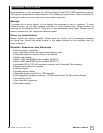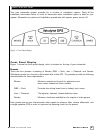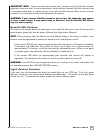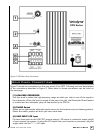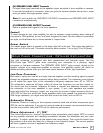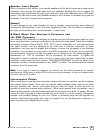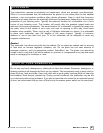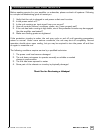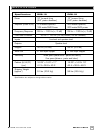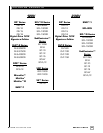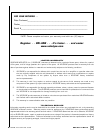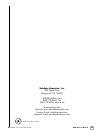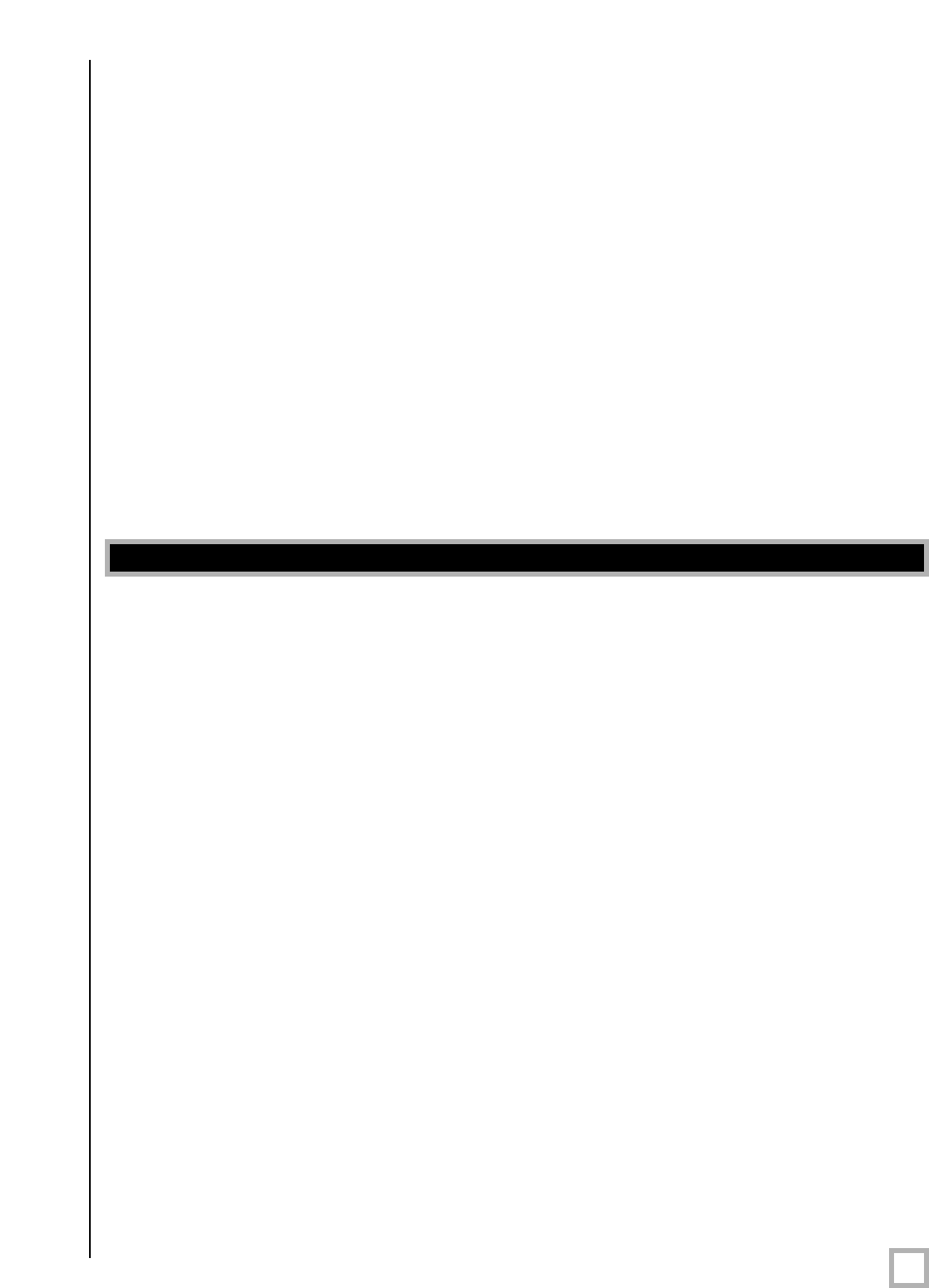
(
B) SPEAKER LEVEL INPUT Terminals
Connect these input terminals to the speaker output terminals of your amplifier or receiver.
I
f you use this method of connection, when you go to the receiver speaker set up menu, make
sure you select the large speaker option.
Note: Do not use both the LINE INPUT/LFE INPUT connections and SPEAKER LEVEL INPUT
connections simultaneously.
(C) SPEAKER LEVEL OUTPUT Terminals
Sends a speaker-level signal to the front speakers.
Caution!!!
To avoid damage to your main amplifier, be sure to maintain correct polarity when making all
connections. Red (positive) to red, and black (negative) to black. Be sure that all connections
are tight, and that there are no loose strands or frayed wires.
Power Switch
The master power switch is located on the lower right half of the unit. This rocker style switch is
the main on/off for the unit. This switch should be set to position 1 for on (up), 0 for off (down).
Your new subwoofer is equipped with both speaker-level and line-level inputs. Use the
RCA/Phono type “INPUT” jacks when connecting your subwoofer to a pre-amp, signal
processor, or line-level crossover. The “SPEAKER LEVEL INPUT” jacks connect directly to the
speaker outputs of an integrated amplifier or receiver. Your amplifier section will notice no
additional loading ef
fects when you use these inputs because of their high impedance.
Low-Pass Crossover
Both sets of inputs sum the left and right channels together and the resulting signal is passed
through an adjustable low-pass crossover before being amplified. The crossover control allows
you to adjust the upper limit of the subwoofer’s frequency response from 40 to 120 Hz.
The subwoofer’s response will begin rolling off above the frequency you set this control to.
You should set the crossover frequency to obtain a smooth and seamless transition from
the subwoofer to the main speakers in your system. If your main speakers are smaller
units with limited low frequency output, you may wish to choose a higher frequency (such as
100 -120 Hz) than you would with larger speakers which have greater low frequency output.
W
ith lar
ger speakers, you might star
t with this contr
ol set lower
, such as 80 Hz.
Subwoofer Direct
Subwoofer Dir
ect is a setting on the low-pass crossover knob and will allow frequencies up to
200 Hz into the subwoofer. If you are not using an external crossover, we recommend that you
use the one provided within the DPS unit for optimum performance.
Phase Adjustment - 0°/180°
This control allows you to “reverse” the phase of the subwoofer’s output signal 180° to correct
for any possible mismatch and r
esulting cancellation between the subwoofer and your main
speakers. To adjust, simply listen to the system with music playing. Then move the switch from
one position to the other and listen for a change in low fr
equency output. The correct position
will have a greater amount of apparent low frequency output.
7
.
www.velodyne.com
DPS User’s Manual
R ear Panel Connections - Detailed Explanation



